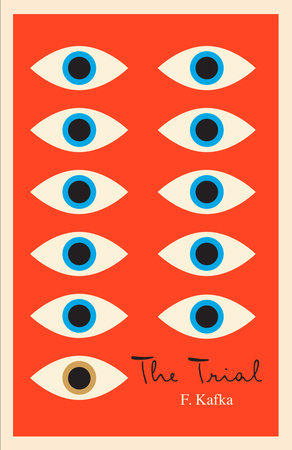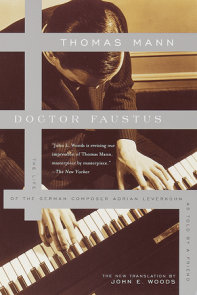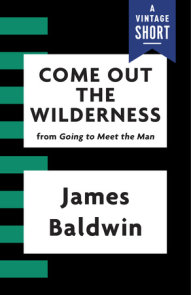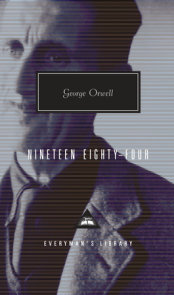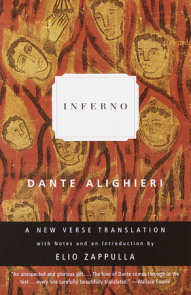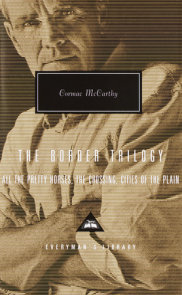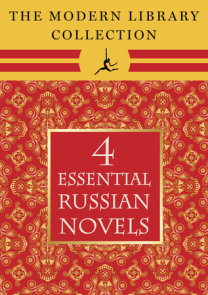TEACHING GUIDE
NOTE TO TEACHERS
This teacher’s guide is keyed to Breon Mitchell’s translation of The Trial (New York: Schocken Books, 1998), which is based on the newly restored German text of Kafka’s manuscript.
Franz Kafka (1883-1924) wrote most of what we know as The Trial in 1914 during the first months of World War I. But he never finished the novel, regarding it as hopelessly “bungled” and leaving it unpublished at his death. In a century that would give birth to the totalitarian regimes of Hitler and Stalin, the story of a man who is arrested without having done anything wrong, never formally charged with a crime but continually harassed, persecuted, and finally executed “like a dog,” has come to represent the fate of countless victims of political and legal injustice. More than any other of his writings, The Trial deserves W. H. Auden’s claim that Kafka bears the same symbolic relationship to the modern world that Dante had to the Middle Ages, and Shakespeare to the Renaissance. What can explain this paradox? How could a German Jew from Prague come to represent the spiritual and political dilemma of the modern age? And how could a “bungled,” unfinished novel prove to be such a compelling work for so many different readers?
The simple answer to the latter question is that Kafka was a great writer. His novel draws us in by showing us this strange and yet familiar world through the eyes of his central protagonist. We are with Josef K. when he is arrested, when he goes to his first interrogation, when he meets with his lawyer; when he is executed, we can almost feel the knife twist in our own chest. Kafka conveys Josef K.’s horrible sense of being trapped, a helpless pawn in the hands of an all-powerful, mysterious “Court.” Who cannot identify in some way with this predicament? At the same time, Kafka coolly refuses to let us see his own view—it is as if the novel had no author (or “narrator”) telling us what to think. Simple, unemotional sentences narrate the most incredible, outrageous events as if nothing were out of the ordinary. In Kafka’s famous story The Metamorphosis (1912), a man is turned into a giant cockroach in his own bed and the story unfolds as if this were perfectly plausible. In The Trial Josef K. is arrested and executed without having done anything “wrong”; yet everyone in the novel, including eventually K., takes this to be a natural if unfortunate state of affairs. The Trial is a kind of mystery novel and uses similar techniques of suspense and intrigue. But unlike traditional mystery writers, Kafka never tips his hand; the mystery remains unsolved.
The answer to the former question is more complex and requires some historical context. Kafka, who died in 1924, was not a prophet of Hitler and Stalin but a keen observer of the moral, political, and ethnic conflicts of his own world. Born into a German-speaking Jewish family in Prague, Kafka was confronted all his life with the status of a (privileged) minority and outsider. Linguistically, Prague was dominated by Czech; German was the official language of government but was spoken by only 5% of the city’s households. As a Jew, Kafka frequently experienced anti-Semitic prejudice from the Catholic and Protestant majority. But his parents’ commitment to Judaism was tenuous; more concerned with financial and social prosperity, they had little understanding for their son’s spiritual needs, including his interest in literature. Like Josef K., Kafka thus found himself isolated no matter where he turned. To the Czechs he was a speaker of German; to the Germans he was a Jew; to many of the Jews he wasn’t Jewish enough; to his family he was a son who never married, refused to take over the family business, and “squandered” his life in the vain pursuit of literary success.
Two other facts of Kafka’s life are worth keeping in mind when reading The Trial. As a relatively high-ranking employee in a government insurance agency, Kafka had ample opportunity to observe the complex nature of legal bureaucracy in Habsburg Austria, a topic that plays such a large role in his novel. Although he never practiced law, he received a law degree from Charles University in Prague where he developed firsthand knowledge of the law, bureaucratic process, and the developing field of criminal anthropology (which sought ways of controlling criminals before they committed a crime). Kafka’s job also brought him into direct contact with the conditions of lower-class life. He met with workers claiming compensation for industrial accidents; he visited factories throughout Bohemia to document working conditions and safety. He also had regular contact with the employees in his father’s wholesale garment business and with the mostly female workers in his family’s asbestos factory. Although these biographical facts do not explain The Trial, they inform a literary work that, for all its “abstractness,” quite precisely describes the legal, bureaucratic and social forces controlling and limiting individual freedom in the modern world.
TEACHING IDEAS
General difficulties presented by “The Trial” and suggestions for overcoming them
Kafka’s novel may initially appear daunting to students as well as teachers with its “heavy” philosophical meaning, “depressing” story (no love interest!), lack of “positive” characters, and “difficult” modernist prose style. But if approached in the right ways, The Trial can be surprisingly compelling to read and easy to teach. A few suggestions to start things off:
First, students should be encouraged to see in Josef K.’s predicament a basic human problem that anyone can identify with: how to defend oneself against an authority with overwhelming power? Get students to discuss their feelings when a parent, teacher or peer group has accused them of doing something wrong and punished them in some way. Did they feel trapped? Was it difficult to explain their point of view? Why? Was the problem resolved? Depending on the students’ age and interests, this question can be reformulated for different contexts: victims of civil rights abuses and police brutality; political prisoners in totalitarian regimes; an individual who is dragged down by petty bureaucracy, incompetence, or “the system” (as in Arthur Miller’s “Death of a Salesman”).
Students should also be encouraged to see how Kafka’s writing style reinforces the reader’s impression of feeling trapped and helpless. Before discussing particular characters or events, get students to describe their reading experience in metaphorical terms. While reading, did they feel like they were indoors or outdoors? In an airless, dark space? With or without colors? Did they know where the different settings in the novel were located and how they related to one another? Hint: Kafka’s sentences are clear and precise, but they are also often confusingly intricate and long, like a labyrinth or a dark corridor without end. Horror movies and Gothic novels often use such physical structures to disorient and scare their audiences; Kafka’s novel isn’t that different.
Don’t forget Kafka’s sense of humor. Though the plot is bleak, it is also quite humorous. When Kafka read the manuscript aloud to his friends, it provoked wild laughter at specific points. Some students pick up on Kafka’s humor right away; others need help to see it. Ask students if they found parts of the novel funny or comical? (For instance: when Josef K. looks for his identification papers and can only find his bicycle license.) You may also want to refer to the hilarious opening of Kafka’s Metamorphosis, when the hero discovers himself to be a giant cockroach and struggles valiantly to get to work on time. The key is to show how the comic and serious elements in Kafka are interrelated; he provokes nervous laughter, not back-slapping comedy where “all’s well that ends well.”
Kafka never finished his novel, which means that many aspects of the plot and characterization are left underdeveloped or unresolved. Rather than treat this as a problem, get students to think of it as a game. For instance, how do they think Kafka would have finished the chapters labeled as “fragments”? How would they have finished them? Are the chapter titles satisfactory or are they mere working labels for a manuscript in progress? Can students provide better titles?
Finally, don’t let students become overly worried by what they don’t understand in the novel. Most novelists give us an abundance of information about their characters and stories; The Trial is remarkable for what it doesn’t tell us. We never learn much about Josef K.’s past and the nature of his guilt. We never find out anything definite about the Court and the high judges who have him arrested. In fact, we don’t even know where the novel is situated or when its events take place. The entire book is wrapped in a mystery that is never resolved—and that is the point. If students can be brought to feel the effects of this mystery on K. and themselves, they will have understood a good deal of the novel’s “message.”
DISCUSSION AND WRITING
Comprehension
1. “Arrest”
Analyze the novel’s first sentence, paying particular attention to the use of the passive voice (“ he was arrested”) and the lack of clear information about the origin of this slander (“someone”) or the nature of his guilt (“anything truly wrong”). In what ways does this sentence establish a pattern for Josef K.’s passivity and for what happens to him in the novel as a whole?
Discuss the significance of Josef K.’s name. Why doesn’t he have a full family name? Is “K.” a symbol for Kafka? But then why isn’t K.’s first name “Franz” (which is actually the name of one of the men who arrest him)? Discuss the other characters’ names, noting the use of family names for some characters (“Titorelli,” “Huld,” “Fraulein Burstner”) and first names for others (“Leni” or “Elsa”). Where does this place Josef K.?
Describe the men who arrest and interrogate Josef K. Are they policemen? What authority do they represent? When K. questions his arrest, he is told: “There’s been no mistake. [Our department] doesn’t seek out guilt among the general population, but, as the Law states, is attracted by guilt and has to send us guards out. That’s the Law” (pp. 8-9). In other words, “guilt” seems to precede an actual criminal act. You may want to discuss the biblical symbolism of Josef K.’s eating an apple for breakfast (p. 10), keeping in mind that the German term in the novel’s opening sentence (translated as “wrong”) can also mean “bad” or “evil.”
Why does Josef K. decide to “play along” with his arrest, even though the men who arrest him never show him any proof of their authority and he thinks it might be a “farce”? Does he behave as if he had a guilty conscience? What do we know about his past life and his family?
One of the unsettling aspects of K.’s arrest is its public nature. Strange men enter his bedroom, neighbors watch through the window while he is arrested, even his colleagues from the bank turn out to be present. Have students comment on this situation of constant surveillance. How does it influence the way K. reacts? Does he become “paranoid”?
2. Conversation with Frau Grubach / Then Fraulein Burstner
K.’s landlady, Frau Grubach, seems to know quite a bit about his arrest. Whose side do you think she’s on? What does K. think? What do we learn about K.’s private life in this chapter? about his neighbors in the boarding house? When Frau Grubach calls into question Frauelein Burstner’s morality, K. exclaims “if you want to run a clean house, you’ll have to start by giving me notice.” Why? And why does he “assault” Fraulein Burstner, a woman he hardly knows, lapping at her face like a “thirsty animal” and planting a long “vampire” kiss on her throat?
3. Initial Inquiry
How is K. summoned to his first inquiry? By whom? Describe the part of the city and the strange building in which it takes place. What are the social conditions of the people living here? Describe the meeting that takes place in the large hall and what K. gradually learns about the Court. K. accuses the examining magistrate of giving secret signals to someone in the audience; is this true? What happens to the washerwoman? How would you characterize K.’s frame of mind when he leaves the assembly?
4. In the Empty Courtroom/ The Student / The Offices
Why does K. decide to return to the courtroom the following Sunday even though he hasn’t been summoned? Contrary to his expectations, the assembly room is empty. Describe the strange, uncanny impression made by an empty room that was full of people in the preceding chapter. Discuss the significance of the room’s physical dirtiness and the lascivious books he finds there. What conclusions does K. draw concerning the nature of the Court? What does he learn from the washerwoman? K. almost passes out from the hot, stuffy air in the narrow corridors of the court? Discuss.
5. The Flogger
Describe the strange clothing worn by the flogger and the two guards that K. finds in the “junk room” of his bank. Why are they being punished? Does K. want to help the guards? How does the flogger describe their actions? Is this a sado-masochistic scene of punishment and humiliation? Does it reflect on the cruelty and submissiveness of other characters in the novel?
The day after this encounter, K. returns to the junk room and opens the door “as if by habit”; but instead of the expected darkness, he finds everything as before, with the flogger ready to beat the guards. Bring out the strangeness of this fact. How can we account for it realistically? Is it a dream?
6. The Uncle / Leni
What do we learn about K.’s family based on his discussions with his uncle? Why is his uncle worried about K.’s trial? K. and his uncle visit the lawyer Huld in the evening; the maid Leni greets them with a candle and takes them into Huld’s dark bedroom, where he is sick in bed. How do these physical details set the scene for K.’s legal defense? Why is K. disturbed to learn that Huld seems to be informed about his trial? Comment on the swiftness with which K. and Leni develop an intimate relationship. What do you make of her webbed hand and of K.’s description of it as “a pretty claw”? What does the uncle think of K.’s liaison with Leni and its effect on his trial?
7. Lawyer/ Manufacturer / Painter
The second paragraph of this chapter describing K.’s conversations with his lawyer lasts for ten full pages (pp. 110-122) and is summed up by the words “In such and similar speeches the lawyer was inexhaustible.” What is the effect on K. and the reader of this interminable paragraph? Does K.’s trial seem endless? How do K.’s worries about his trial affect his work at the bank?
What relations does Titorelli the painter have to the Court and K.’s trial? Is this his real name? Describe the section of town where Titorelli resides, his neighbors, and the building he lives in. What role do the girls play in their meeting? Does their physical deformity say anything about their moral character?
Titorelli is working on a portrait of a Court judge that has a dark figure in the background; he explains that the figure has been commissioned to represent “Justice and the goddess of Victory in one” (p. 145). What does this combination say about the nature of K.’s trial? What does Titorelli explain to K. about the possibility of winning a case?
8. Block, the Merchant / Dismissal of the Lawyer
At the beginning of this chapter K. seems ready to dismiss his lawyer. What does he discover in Huld’s house that makes him doubt his decision? How does K. behave toward the merchant Block? How do Leni and Huld treat him? What distinguishes K. from Block? Will he look and act like Block at a later stage in his trial? Can K. count on Leni’s support?
9. In the Cathedral
Discuss the importance of the cathedral setting for this chapter. What elements suggest a relationship between Josef K.’s trial and the crucifixion of Christ? The priest identifies himself as the “prison chaplain”; comment on this combination of the Church and the Court. Why does the priest describe K.’s tourist guidebook as full of “irrelevancies” and tell him to put it aside? What does he think about K.’s relations with women?
Discuss the parable “Before the Law” (pp. 215-17). Who is the “man from the country”? Describe the doorkeeper and his relationship to the Law. Why doesn’t the man from the country go in? Has he made a mistake? What does Josef K. learn about his own trial from this story? Note the complexity of the discussion between K. and the priest following the parable, which some critics have compared to rabbinical commentary of the Bible. Comment on K.’s final statement that “Lies are made into a universal system” (p. 223), and on the priest’s parting words to K. that “The court wants nothing from you. It receives you when you come and dismisses you when you go.” (p. 224) Does this mean that K.’s “trial” is self-inflicted?
10. The End
Describe K.’s clothing in the opening of the chapter; how does it relate to the clothing he put on at the beginning of his trial? Describe the men who take K. away, noting K.’s description of them as “supporting actors” and its relation to his initial decision to “play along” with the “farce” or “comedy.” Do you find it odd that he seems to expect them and know what they will do to him? Describe the fleeting appearance of the woman that K. takes to be Fraulein Burstner. Discuss K.’s final questions upon noticing a human figure in the distance: “Who was it? A friend? A good person? Someone who cared? Someone who wanted to help? […] Where was the judge he’d never seen? Where was the high court he’d never reached?” (pp. 230-31).
What makes K.’s execution so horrific? K. thinks he dies “like a dog!” Why? Discuss the importance of shame, reputation, and one’s “good name” in the novel in light of this scene. Does the execution reflect badly on K. or on the Court? Whose side are you on? Does Kafka make it clear which side we should be on?
SUGGESTED ACTIVITIES
Fragments
The schematic nature of the “fragments” makes them hard to interpret. But they are tantalizing nonetheless, particularly “Journey to his Mother” for the unusual information it provides about K.’s family life apart from his trial (which may be why Kafka never developed it further). Teachers should select passages that they find interesting for their reading of the novel, keeping in mind that the passages deleted by Kafka that were contained in the appendix to the Muir translation of The Trial (Schocken Books, 1946) are not included in this new edition.
OTHER TITLES OF INTEREST
1. Reading materials
One of the most informative sources about Kafka’s life and work remains Max Brod’s Franz Kafka: A Biography, trans. by G. Humphreys Roberts and Richard Winston. New York: Schocken Books, 1960. The best recent biographies are by Ernst Pawel, The Nightmare of Reason: A Life of Franz Kafka. New York: Farrar, Straus & Giroux, 1985 and Pietro Citati, Kafka, Trans. Raymond Rosenthal. New York: Alfred A. Knopf, 1990. For an introduction to Kafka’s Prague and basic aspects of his writing, see Reading Kafka, ed. Mark M. Anderson, New York: Schocken Books, 1989. A useful overview of critical approaches to the novel may be found in Franz Kafka’s “The Trial”, ed. Harold Bloom, New York: Chelsea House, 1987. In Kafka’s Other Trial: The Letters to Felice, Elias Canetti discusses the important role played by Kafka’s engagement to Felice Bauer in the composition of the novel. Among the many general studies of Kafka, the following list (in chronological order of appearance) will be of particular interest to teachers of The Trial:
Hannah Arendt, “Franz Kafka: A Revaluation,” in Essays in Understanding, 1930-1945, ed. Jerome Kohn. New York: Harcourt Brace & Co., 1994;
Albert Camus, The Myth of Sisyphus and Other Essays. Trans. Justin O’Brien. New York: Alfred A. Knopf, 1955;
Heinz Politzer, Franz Kafka: Parable and Paradox. Ithaca, N. Y.: Cornell University Press, 1966;
Evelyn Torton Beck, Kafka and the Yiddish Theater: Its Impact on His Work. Madison: University of Wisconsin Press, 1971;
Ritchie Robertson, Kafka: Judaism, Politics, and Literature, Oxford: Oxford University Press, 1985;
Mark M. Anderson, Kafka’s Clothes: Ornament and Aestheticism in the Habsburg “Fin de Siecle”, Oxford: Oxford University Press, 1992.
Sander Gilman, Franz Kafka, the Jewish Patient. New York: Routledge, 1995;
Milan Kundera. Testaments Betrayed. An Essay in Nine Parts. Trans. Linda Asher. New York: HarperCollins, 1995;
Elizabeth Boa, Kafka: Gender, Class and Race in the Letters and Fictions. Oxford: Oxford University Press, 1996.
2. Other media
Klaus Wagenbach’s Franz Kafka: Pictures of a Life (New York: Pantheon Books, 1984), contains every known photograph of Kafka as well as a rich visual record of Prague at the turn of the century.
Two films have been made of The Trial, one by Orson Welles in 1961, another by David Jones with a script by Harold Pinter in 1992. Though somewhat dated, Welles’ stark, black-and-white version offers an inventive interpretation of the novel that is useful for class discussion. Anthony Perkins stars as a nervous Josef K., Jeanne Moreau as the vamp-like Fraulein Burstner, and Welles himself as the lawyer Huld. Steven Soderbergh’s Kafka (1991), stunningly shot in Prague and starring Jeremy Irons, does not follow a particular work by Kafka but offers a brooding meditation on political intrigue, bureaucracy and an isolated, visionary writer.
Martin Scorsese’s comedy After Hours offers an updated, Soho version of Josef K.’s nightmare, complete with a nightclub bouncer who recites the parable “Before the Law” verbatim.
ABOUT THIS GUIDE
Prepared by Mark M. Anderson
Professor of Germanic Literatures
Columbia University
May 1999
×
Become a Member
Just for joining you’ll get personalized recommendations on your dashboard daily and features only for members.
Find Out More Join Now Sign In






